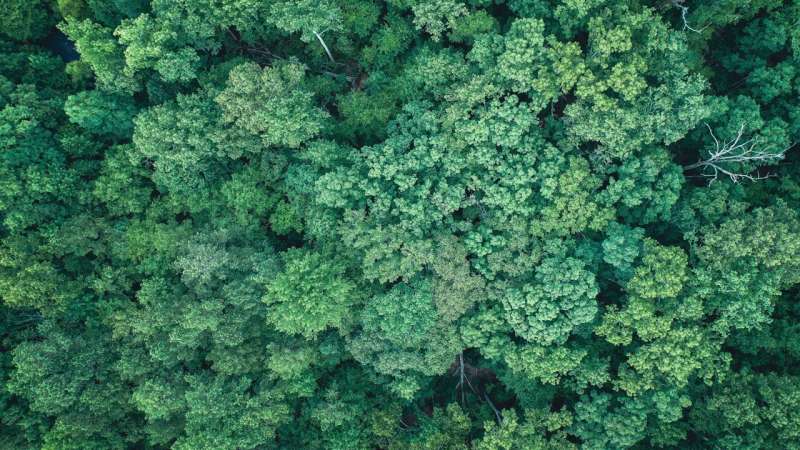Seasonal effects on aboveground biomass estimation in mountainous deciduous forests

Forest three-dimensional (3D) structure measurement is a key factor in achieving high-precision estimations of vegetation carbon storage. A stereoscopic point cloud is used for forest 3D structure observation.
Researchers from the Aerospace Information Research Institute (AIR) of the Chinese Academy of Sciences (CAS) have found that the proportion of sunlit background visible in remote sensing images controls the vertical distribution of stereoscopic point clouds. The higher the proportion of visible sunlit background, the stronger the ability to detect the understory terrain.
The study was published in Remote Sensing of Environment. It provides new insights for the measurement of forest 3D structure using a satellite-borne optical multi-angle stereo observation point cloud.
The team realized the unique value of satellite-borne stereoscopic observations for measuring forest 3D structure and carried out in-depth research. They confirmed that leaf-on imagery could depict the structure of forest canopy top, while leaf-off imagery had the potential for detecting understory ground elevations.
They also developed a stereoscopic observation model of forest, which was used in the design of China’s Terrestrial Ecosystem Carbon Inventory Satellite, making it the only satellite in China that is capable of both along-track spectral and multi-angle stereo observations.
The researchers investigated the vertical distribution of optical multi-angle stereo observation point clouds in forests by using data from eight different dates, ranging from August with leaf-on to March with leaf-off. During the period, the sun elevation angle changed from 55.62° to 15.66° under different terrain and forest density conditions.
The results showed that in non-closed forests, the point clouds in early September were closer to the canopy top, while those in August were closer to the ground. On north-facing slopes, the point clouds were close to the ground when there was no foliage and there was sunlight, while even in leaf-off periods of November or January with lower solar altitude angles and no sunlight, the point clouds were mainly distributed in the tree canopy. The proportion of sunlit background in images controls the ability to detect understory terrains, which can explain the difference between multi-temporal point clouds.
The study reveals the vertical distribution features of stereoscopic point clouds with changes in temporal, terrain, and forest density, providing a theoretical basis for using these point clouds to measure the 3D structure of regional forests. It also provides a new technical approach for accurately calculating carbon storage in deciduous forest areas.
More information:
Wenjian Ni et al, Seasonal effects on aboveground biomass estimation in mountainous deciduous forests using ZY-3 stereoscopic imagery, Remote Sensing of Environment (2023). DOI: 10.1016/j.rse.2023.113520
Citation:
Seasonal effects on aboveground biomass estimation in mountainous deciduous forests (2023, April 25)
retrieved 25 April 2023
from https://phys.org/news/2023-04-seasonal-effects-aboveground-biomass-mountainous.html
This document is subject to copyright. Apart from any fair dealing for the purpose of private study or research, no
part may be reproduced without the written permission. The content is provided for information purposes only.
For all the latest Science News Click Here
For the latest news and updates, follow us on Google News.

